The Apple iPhone 6s and iPhone 6s Plus Review
by Ryan Smith & Joshua Ho on November 2, 2015 8:00 AM EST- Posted in
- Smartphones
- Apple
- Mobile
- SoCs
- iPhone 6s
- iPhone 6s Plus
Final Words
The iPhone 6s in a lot of ways seems like it’s simple enough to review, but it turns out if you dig deep the changes have been significant. Over the course of a review, we’ve found major changes in the SoC, storage solution, camera, touch screen, fingerprint scanner, voice recognition software, cellular architecture, and WiFi chipset.
On the SoC side, it’s pretty safe to say that the A9 SoC is the best SoC in any phone today. We can talk about the TSMC and Samsung controversy, but at the end of the day regardless of which one you end up with the performance is going to be far and away better than anything else we’ve seen thus far. There are a lot of reasons for this, but at the end of the all that really matters is that the phone delivers the best user experience in areas where GPU or CPU performance is a gating factor. Again, I keep coming back to web browsing but due to the nature of wasteful yet necessary abstraction that occurs in websites and web applications it’s incredibly important that a high-end phone starts to challenge 2-in-1 and passively-cooled laptops in burst performance for a good user experience.
While CPU and strong browser optimization is critical for good web browsing performance, GPU is the other half of the equation to this SoC, even if it isn’t necessarily used to the fullest extent. The reality is that a high end phone is going to be used for gaming by a lot of people, and at the high-end gaming performance really needs to be impressive. The iPhone 6s’ are going to do well at this. GFXBench isn’t the same thing as an actual game, but the fact that the iPhone 6s and 6s Plus are basically pegging T-Rex at the maximum possible frame rate for most of a 3-4 hour infinite run of this intense benchmark basically means that gaming on the iPhone is going to be the best possible experience due to its incredibly high unthrottled GPU performance and the length of time that it’s able to sustain that unthrottled GPU performance. No other SoC I've tested this year can sustain this level of performance for this level of time.
The other truly impressive aspect of the iPhone 6s’ this generation is the storage solution. The iPhone’s storage solution here is ahead of everything else in the industry for three clear reasons. The first is the use of more advanced NAND organization. Although TLC NAND alone is going to be clearly worse for performance than SLC or MLC NAND, the iPhone 6s’ use SLC caching in conjunction with TLC NAND to improve storage performance in the situations that matter. The second is the use of PCI-Express to enable much higher bandwidths, which means that the SLC cache can really stretch its legs to reach the high levels of bandwidth that it’s capable of. The third is the use of a custom storage controller with NVM Express, which helps to realize the full benefits of PCI-Express. Overall, all of these things come together to make noticeable differences in user experience. Probably the most obvious example here would be iCloud backup and restore, along with app installs and updates. Burst photography and camera speed are also improved as a result of better storage.
The next upgrade worth discussing in the iPhone 6s lineup is the camera. The move to a 12MP rear camera was something that I personally was at least mildly skeptical of, but after testing the camera for myself I’m firmly convinced that Apple has managed to move to 12MP without noticeable degradation. The camera may not be sharper in most scenes, but the extra pixels enable 4K video recording, and it seems that this generation the improvements to video recording quality are enormous. On both iPhone 6s’, the addition of 4K video recording without random recording limitations, loss of image stabilization, or rapid overheating is surprisingly rare given the number of phones that support 4K video recording. The addition of 1080p120 slow motion video only magnifies just how far ahead Apple is in this segment when compared to Android smartphones. The iPhone 6s Plus also carries the rare distinction of having active OIS in video recording without the associated problems with jerky OIS behavior. The one disappointment here is that the iPhone 6s doesn’t have OIS, which increasingly feels like a pretty significant differentiator. Live Photos are also cool, even if at this point it remains to be seen if it will gain traction in the market.
The addition of 3D Touch to the iPhone 6s is probably something that seems like a gimmick on the surface, but after enough time with the iPhone 6s’ I can confidently say that this is probably one of the bigger changes to user interfaces in years. As-is, Apple has already managed to eliminate a lot of the friction that normally occurs with smartphone interaction when attempting to preview content without losing focus. However, going forward I can see significant changes in how people will interact with their phones. This isn’t really a revolution in the same way that the original iPhone is, but it’s a critical evolution step in the same way high-DPI displays were. I don’t think anyone is going to suffer greatly because their phone doesn’t have pressure sensitivity, but once you have this feature it’s hard to go back.
The second generation of TouchID isn’t quite as life-changing, but it’s a welcome improvement nonetheless. Again, this is a case where there was friction in the user experience that wasn’t really noticeable until it was gone. Obviously, Apple is no longer the only one at this level of user experience with fingerprint scanners but they are keeping up. The addition of always-on Siri is similar to TouchID in that regard, as while it isn’t life-changing it is a welcome improvement. The amount of polish in the personalized voice recognition is also impressive to see in action, and something that isn’t necessarily present in every implementation of always-on voice recognition that I’ve seen.
The sort of finishing touches to the iPhone 6s are the improvements to the cellular modem and WiFi chipset. The upgrade to Qualcomm’s MDM9x35 Gobi modem helps to improve power efficiency along with moving the iPhone 6s to UE Category 6 compatibility for LTE. The move to Broadcom’s BCM4350 WiFi/BT combo chipset enables 2x2 802.11ac, which means better range and throughput for routers that support MIMO.
Overall, after spending all this time with the iPhone 6s I can’t find anything really wrong with this phone. On the contrary, the A9 SoC is a huge jump in performance even relative to other SoCs on the same process node to give impressive application performance. The storage solution is unlike anything else in mobile that I’ve seen so far. The camera’s overall user experience is just about the best that you can get on the market. 3D Touch is a big improvement in user experience, while TouchID v2 and always-on Siri are worthwhile improvements in user experience. The only real issues I can think of are that the iPhone 6s doesn’t have OIS and that the base SKU is still 16GB of storage. To be fair, the 16GB SKU can become a noticeable user experience issue if you're constantly dealing with the limits of this storage, and the jump from 16 to 64 GB feels like it's simply designed to encourage buying a more expensive SKU. There are arguments that users that don't really take a ton of photos or videos and stream all their media will be fine, but it's still a user experience problem in this day and age. However, despite these issues I would argue that the iPhone 6s’ are the best phones you can buy today.
Of course, this sounds like a rather hollow recommendation to those that have followed our reviews for the past year. This year, more than ever it feels like Android smartphones at the high end have stood still, as if smartphone improvements have become a zero sum game. To make the best phone this year is therefore a pretty low bar to clear. However, the iPhone 6s, even when compared to iPhones alone, is especially noteworthy for the improvements to overall user experience.
On top of being a great smartphone in the same vein as previous smartphones, the addition of 3D Touch is a big deal. The idea of having additional interactions on top of a traditional touch screen is not a new idea. Samsung has tried the same before with Air View. However, what matters here is that the implementation is novel and useful in a way that other implementations weren't. 3D Touch manages to work because there's no need to hover a finger over a single link for half a second and rather than a single potential extra action there are a whole range of potential additional interactions that can be pressure-based. Zooming in and out on a browser could be done by pressure to greatly improve the user experience on desktop-only websites instead of constantly pinching in and out to read various parts of the page. AE/AF locking through increased pressure rather than a long press, more sophisticated gaming controls, and other applications have yet to be realized, but just the ability to preview web pages, messages, emails, and other content is a significant change in how I use a phone from day to day. Instead of constantly tapping and then immediately swiping back on emails and messages, it's much faster and more convenient to quickly press down on a single email to preview the first paragraph or so before moving on to the next just by letting go of the display. OEMs and SoC vendors often speak in platitudes about how user experience matters but 3D Touch is probably the first case where the user experience is visibly improved in a very real way.

In light of these factors, I would give the iPhone 6s line the Editors’ Choice Gold award. Looking back on the phone that has received this award in the past, I believe that the criteria for this award is such that a product is not only one of the best in its category and an extremely good product in a vacuum, but pushes the smartphone user experience forward in significant ways. The iPhone 6s isn't a perfect phone, but to receive the second highest award I don't believe it's necessary to make a "perfect" phone. There are areas that could be improved, but nothing that I believe is a significant detriment to the phone.


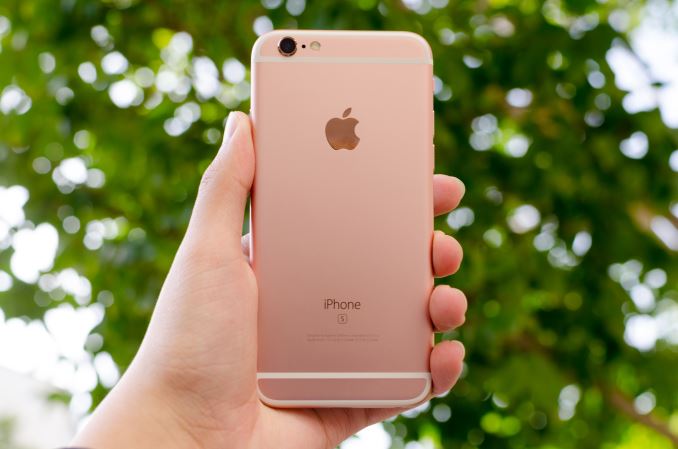
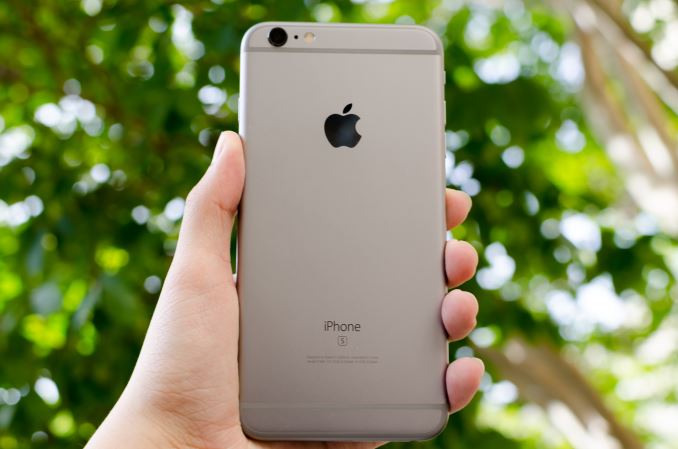
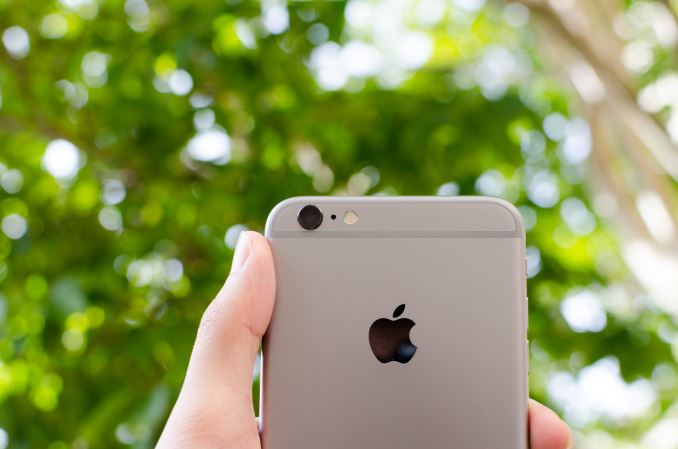
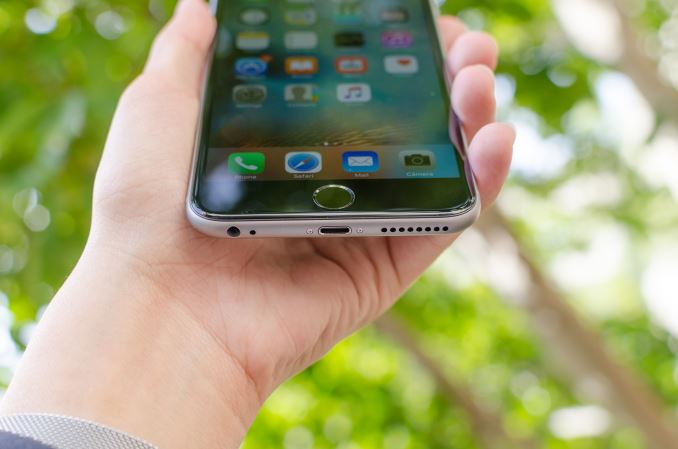
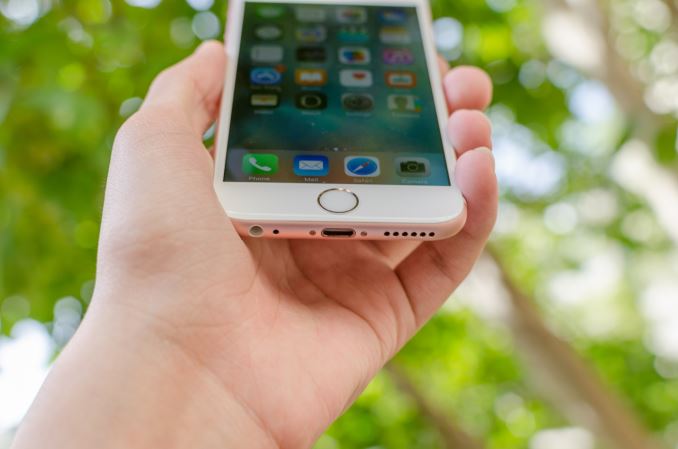
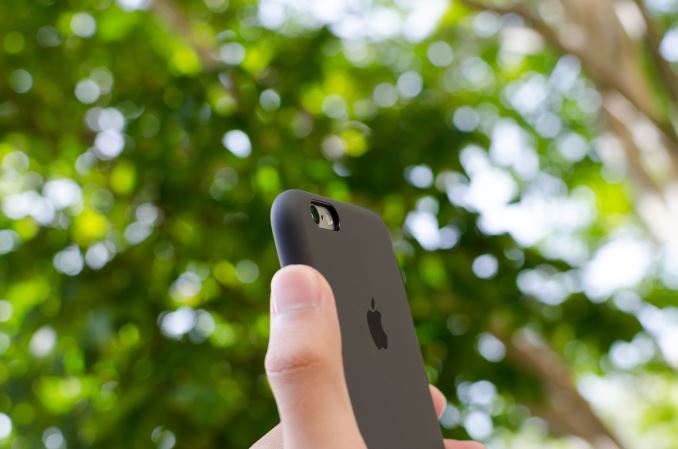
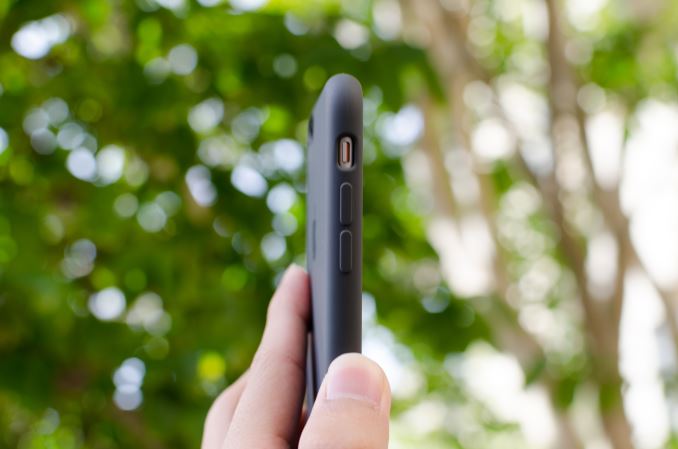








531 Comments
View All Comments
flyingfiddle - Wednesday, November 4, 2015 - link
Truly amazed and convinced that Apple has the best SoC of any phones, and their investment on the SoC paid off. So does their investment on refined iOS experience. I am Android guy but I have to admit I really wish SoC on Android could catch up one day, sooner the better.On the other hand, just because Apple is great in some areas does not mean they should get away with other things that's not as great. The raw power of a high end phone has become more than sufficient for many general users, such that making it more powerful is starting to generate diminished return. I could think of many things that I wish iPhone has, such as longer battery life (i know it's great, relatively, but why not push the boundary?), better screen/body ratio, external memory, more setting and better UI in the camera app, etc.
Well, still not my cup of tea but truly wish Android SoC could catch up one day. That's assuming Android platform survive that long (they have the largest market share but really don't make much money). I hope my money helps supporting them a bit longer..
tytung - Wednesday, November 4, 2015 - link
Can anyone comment on the iPhone 6s Plus frame rate dropping issue ? Animations looks choppy and the frame rate looks like only about 30 fps, unlike 60 fps on the 6s. If the GPU on the phone is so powerful this should not be an issue. In fact, for a phone this expensive UI frame rate drop is really a shameful problem.polmes - Thursday, November 5, 2015 - link
Got tired of iOS and moved to Android (Galaxy S6) earlier this year, but Apple definitely deserves an applause for being basically the only one to keep innovating in the mobile space. kudosSocius - Thursday, November 5, 2015 - link
Hmmmm...any idea why your iPhone 6s Plus scored just 15800 in Google octane when mine scored over 18,000? That's a pretty big discrepancy at 15%. Does your phone have a Samsung CPU? Mine is TSMC.zeeBomb - Thursday, November 5, 2015 - link
Both units are TSMC.Socius - Thursday, November 5, 2015 - link
Then there's something off as there is no way the 6s plus should be scoring just 15,800 on octane.mortimerr - Thursday, November 5, 2015 - link
I've never actually owned an Apple product in my life. All the way back to the original iPod classic. But I will probably finally be changing my stupid principle of 'No Apple Products'.The Android landscape recently has been going back instead of forward. Android 5-6 showcase minor improvements over 4.4.4 (Personally I also prefer Halo. Marshmallow and Lollipop looks slightly cartoony), battery life isn't that much of a leap (a lot of devices are experiencing the mobile radio active bug), and due to the fact that the high end market in the East is so saturated, most OEMs are cutting costs and putting out mid tier phones that lack top end hardware.
A lot of recent releases for Android have a great price point but either have a terrible camera (sensor, pixel size, post processing etc) or the IPS display leaves something to be desired, or it's this or it's that. The only OEM pushing the platform forward is Samsung. But, to be quite frank, I find those devices ugly to look at in every way from the bezel, UI skin, back, front, etc.
Where as Apple continues to simply improve with every iteration. Dual source fab at 14nm! What? 3D touch, increasing the ppi, maintaining solid battery life, great low light camera performance. Offering a big size and a small size with the same internals.
Sony also did this but I don't see the 810 as a very good chip going forward. Especially when it's already pretty far behind in performance to the Exynos and A#. I'll look forward to see if Sony updates the Z line.
I want to wait for Q2'16 for when devices with the 820 start being released, but what's the point when every device will inevitably have some drawback or large flaw or straight up just not be released in N. America.
JTRCK - Friday, November 6, 2015 - link
Where do you want phones to go? There's not much else they can do. A phone being imperfect is "always" the case. There is always something lacking in all these devices, including the iPhone 6S and 6S Plus. One of the first mentions in this review is that the author is still using an HTC One M7 from years ago. Because quite honestly, that was the pinnacle of smartphone design plus an excellent combination of fluid software, excellent performance, and an excellent night performance for a camera (though everything else about that camera was a downgrade). That 3 year old phone is still a very good performer today.Increasing processor/RAM/Storage speed is all excellent and it's expected, but the benefits from such increases are hardly felt by the user on day to day usage. Especially if the software is done properly. Example: I have an old iPhone 4s at home that I use for music streaming that consistently beat out my previous note 4 on application opening, multitasking, sound output quality, web surfing speed, etc. Which phone is superior? Which phone is better? Did AnandTech give that iPhone 4s the BEST award? In my view Apple has always been the king of software and hardware performance. They can get a device with 512mb of ram to outperform a Note 4 with a multicore processor and with 3GB of ram. They should always get the BEST award. But is the BEST (100%) really worth $1,200.00 when the second BEST (99%) is half the price?
I'm not talking about Samsung here. Their phones are expensive with crappy performance. I'm talking about the Moto X Pure, HTC One M9/10, Nexus 6P, etc. I used an iPhone 6S Plus for 2 weeks (and an iPhone 6 Plus for 4 months before that) and returned it for the Nexus 6P. I find the 6P to be a much better phone than the iPhone 6S plus in almost every aspect. It charges faster, it opens applications just as fast, I can multitask faster with the 6P with a side launcher without ever having to see a home screen. I can transition within an app at a faster pace due to dedicated back buttons. A simple thing as not having a "button" to go back a task annoyed me to no end with the iPhone. Not to mention all the limitations of iOS. The only benefit of iPhone for me were the integrations with my Macbook, but other than that. I disliked both iPhones.
The iPhone has all this amazing technology at its core, but my grandmother would never know when using her new 6S. And that's how it should be. I'm more amazed that a Nexus 6P costs half what an iPhone costs while still managing to do just as much, if not more. I honestly found nothing revolutionary about the 6S Plus while using it. In fact, I found it to be quite similar to the 6 Plus. Which I found to be quite similar to the iPhone 4s. Just much larger. And in terms of OS performance, vanilla android at this point is quite simply just as visually pleasing, power efficient, responsive and performant as iOS.
FL777 - Friday, November 6, 2015 - link
Amusingly, there is a YouTube real world speed test between the Nexus 6P and the iPhone 6S and the Nexus 6P BEATS THE IPHONE 6S!!!!!http://www.frequency.com/video/nexus-6p-vs-iphone-...
So much for the iPhone 6S SoC being unbeatable LOL.
Blark64 - Friday, November 6, 2015 - link
Umm, did you watch the video? The difference was milliseconds, and with a "hand-done" test like this the phones were well within the margin of error, and essentially tied. Also, that was possibly the least informative benchmark I've ever seen, since repeatedly launching apps in a tight cycle is something that essentially no one actually does in the real world. That's why benchmarks that are either: more reflective of the real world, or synthetic and scientifically repeatable (like Geekbench and the various browser benchmarks), are probably a better guide.